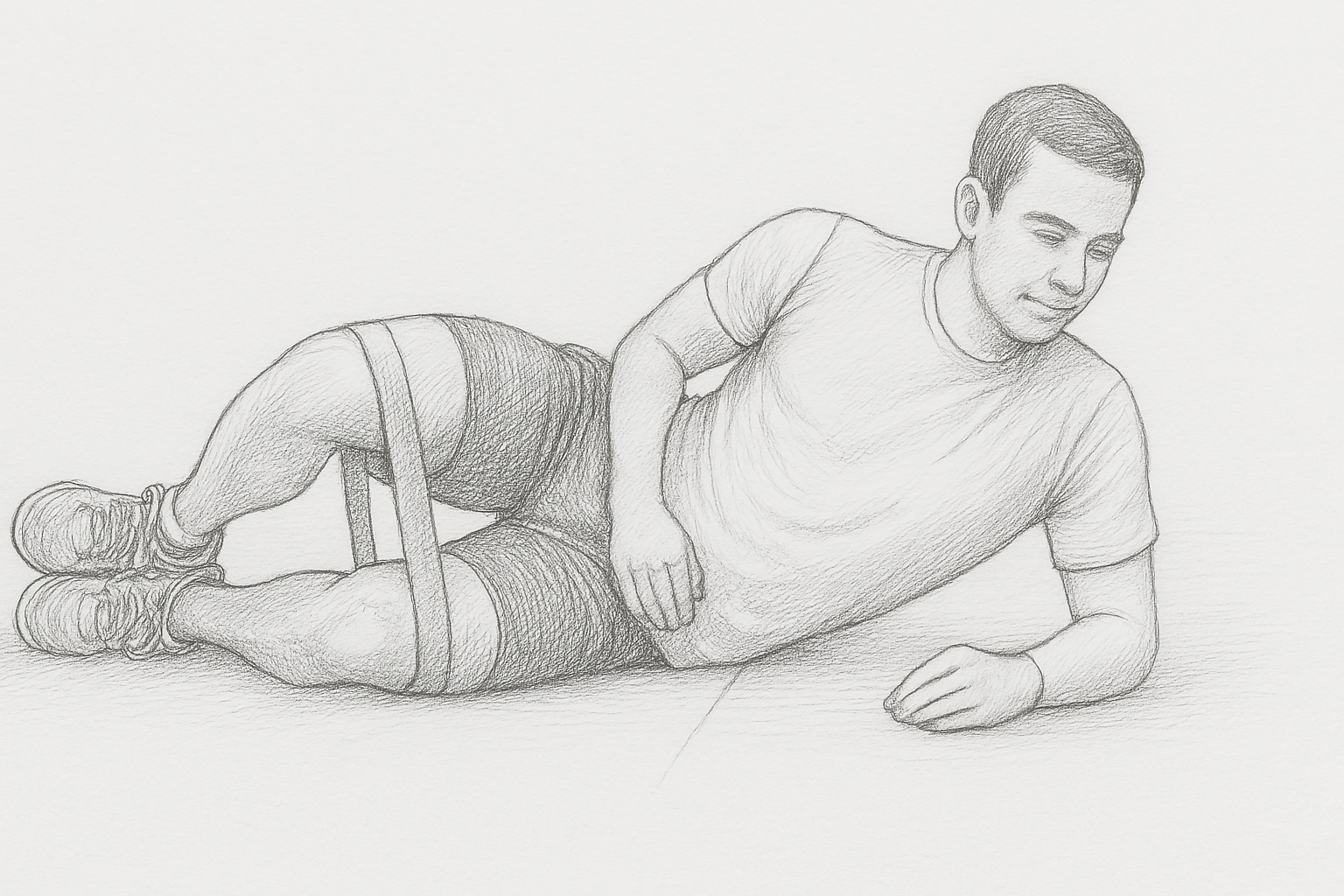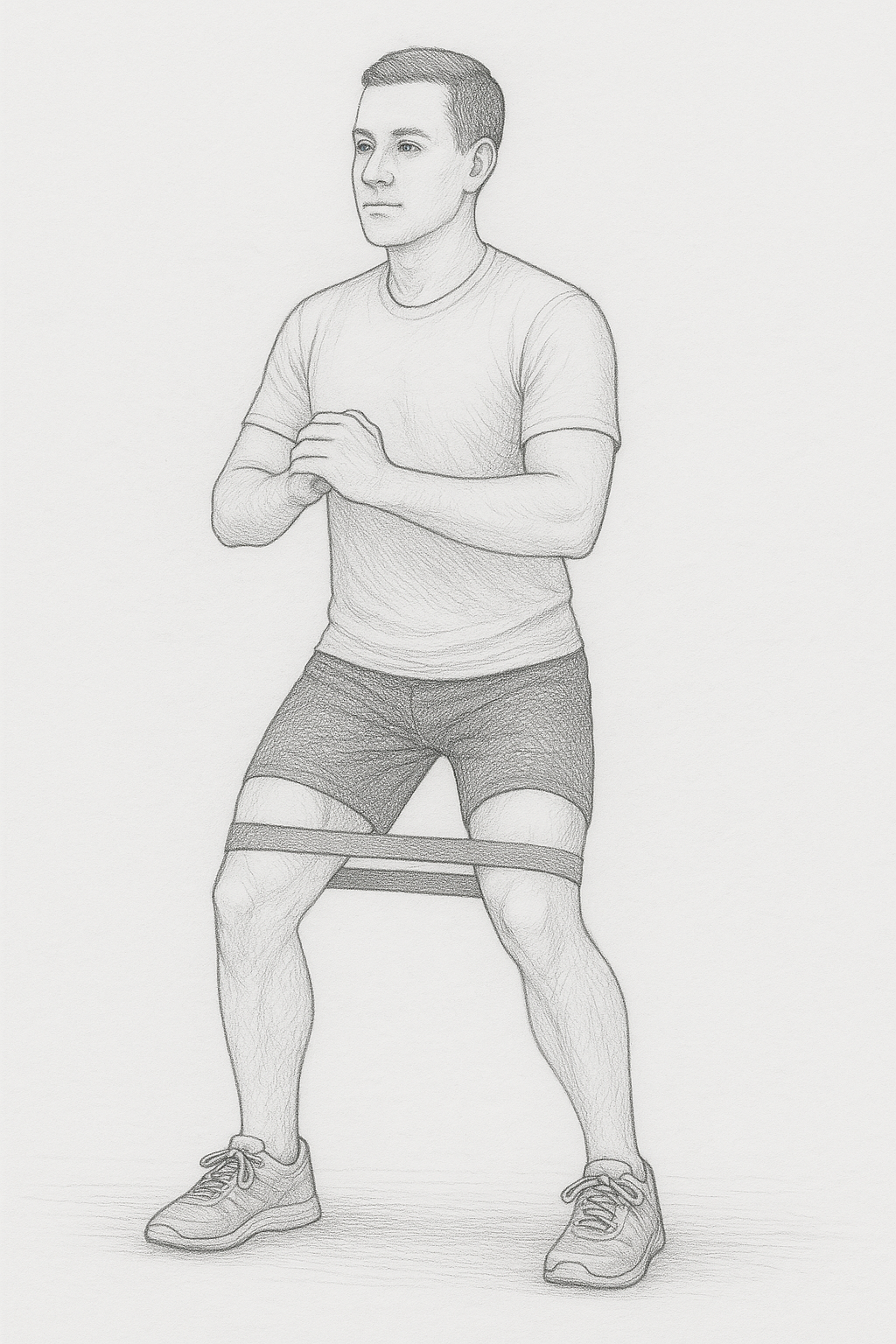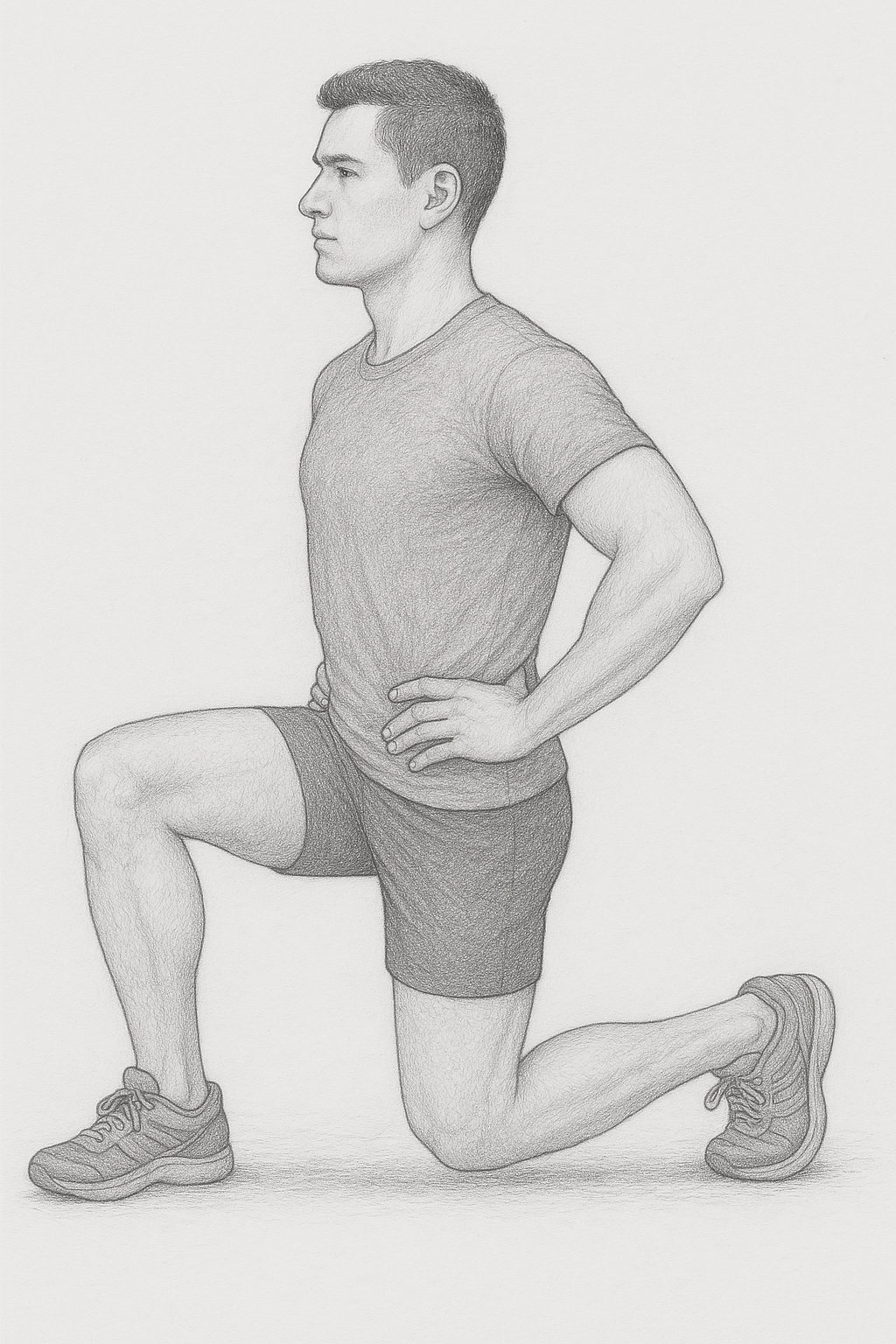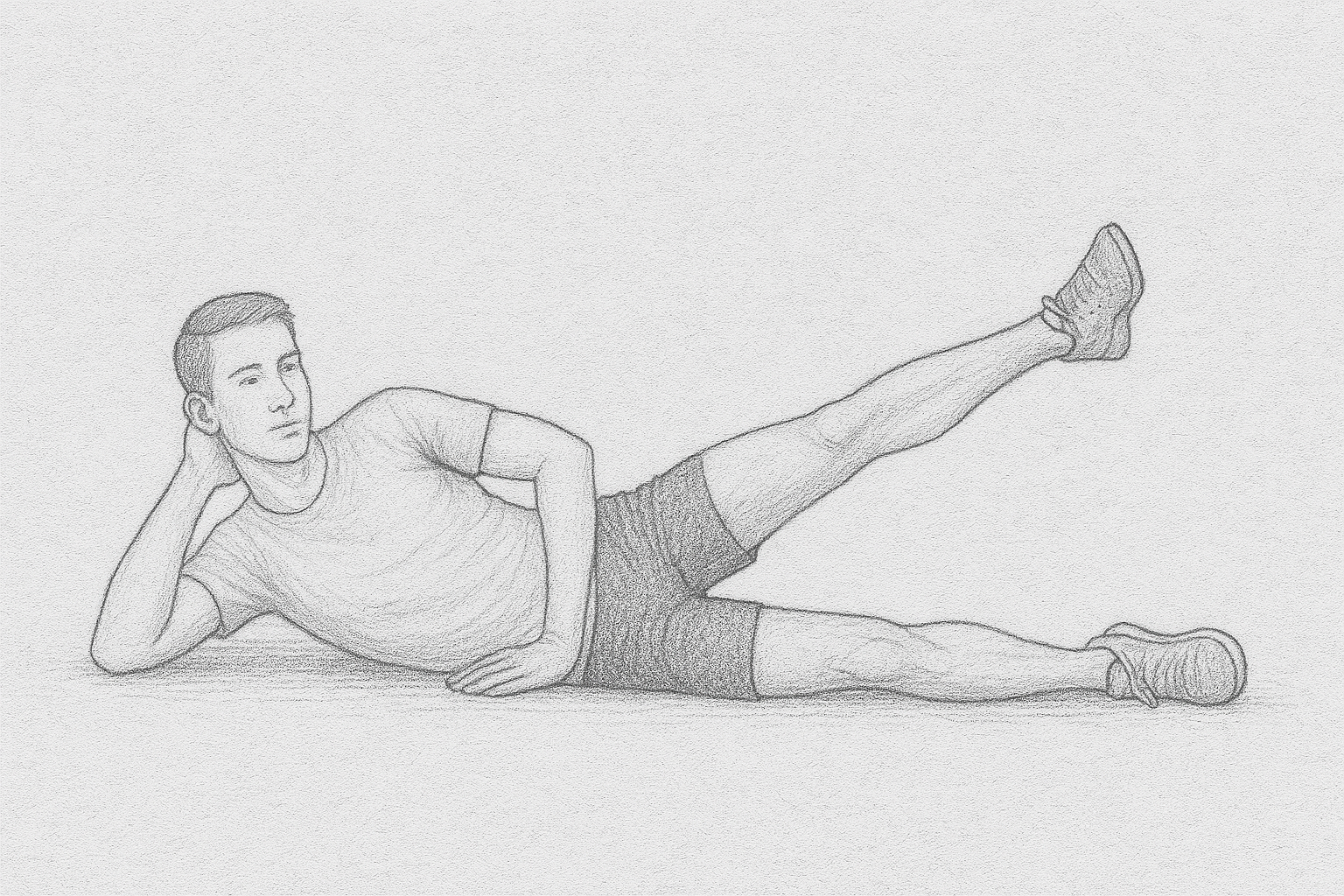That nagging outer hip pain when walking isn’t just uncomfortable. It can throw off your entire rhythm, slow your pace, and make even short errands feel like a chore.
If you’re dealing with this kind of discomfort, you’re not alone. Many people experience lateral hip pain caused by tight muscles, poor movement patterns, or weakness in the stabilizing muscles that support your stride.
You don’t need to push through the pain or give up walking. There are exercises that target the real problem and give you relief without making things worse.
In this blog, you’ll learn the top exercise that can help ease outside hip pain and support better walking mechanics. Whether you’re already active or just starting to get back on your feet, this is a great place to start.
Iliotibial Band Syndrome: How To Reduce Outside Hip Pain After Walking
What IT Band Syndrome Feels Like
That sharp or burning pain on the outside of your hip after walking? It often shows up near the greater trochanter, where the iliotibial band glides over the thigh bone.
You might notice outer hip pain when walking creep in during longer walks, especially on hills or uneven sidewalks. The pain can travel from the outer hip down the outer thigh and may even feel like referred pain in your leg.
You’ll likely feel this pain:
- Along the outer side of your hip or thigh
- When climbing stairs or walking at a brisk pace
- After sitting with legs crossed for long periods
- When lying on the affected side
Some people describe the pain as a snapping or popping near the hip joint. Others feel stiffness or a dull ache that worsens with each step.
What Causes IT Band Syndrome After Walking
This kind of hip problem usually comes from repetitive stress or poor muscle coordination. When your gluteal muscles and core muscles are weak, your body leans on other soft tissues to stay upright and balanced.
Common reasons include:
- Weak gluteal muscles or buttock muscles
- Poor control through one leg
- Overuse of the long band of connective tissue on the outer thigh
- Tight hip muscles or tendons
- Walking with poor form or weight unevenly distributed
- Limited flexibility in the hip socket or hip area
- Lack of recovery between walks or workouts
The iliotibial band starts to rub over the greater trochanter or thigh bone. That friction causes irritation and may lead to inflammation in nearby fluid-filled sacs or tendons.
How IT Band Syndrome Impacts the Hip Joint
Left untreated, this condition can lead to more serious hip conditions such as trochanteric bursitis or gluteal tendinopathy. In some cases, the pain spreads to the low back or pelvic area due to changes in how you move.
You might feel:
- Pain during each step, especially on the affected leg
- Outer hip pain or burning pain near the hip bone
- Snapping near the greater trochanter
- Soreness in the outer hip after walking for long periods
Changes in your walking pattern can strain other structures like the ball and socket joint, hip flexors, or core muscles. This can create hip strains or even lead to labral tears in more advanced cases.

How To Prevent Outer Hip Pain From Walking
To reduce symptoms and avoid further injury, start by addressing the underlying cause. That often means building strength and improving balance around your hip joint.
A few simple ways to reduce hip pain and protect your hip bones:
- Warm up your hip muscles with dynamic movement before walking
- Stretch the hip flexors, gluteal muscles, and IT band
- Alternate between walking and rest throughout the week
- Use supportive shoes that match your gait
- Pay attention to pain on the painful side before it worsens
Walking should feel fluid and pain-free. If your stride feels uneven or forced, you may be compensating for weakness that needs to be addressed with strengthening exercises.
Treatment Options To Relieve IT Band Pain
Start with conservative measures that help reduce pain and inflammation. You don’t need to stop walking altogether, but you may need to ease off for a few days.
Try the following:
- Rest the affected side to give soft tissues time to heal
- Apply a hot water bottle before stretching or use ice after walking
- Take over-the-counter anti-inflammatory medication if needed
- Stretch the tight muscles along the outer thigh and hip
- Strengthen gluteal muscles, hip abductors, and core muscles
A physical therapist can guide you through specific exercises to improve muscle control around the hip socket. They’ll assess your starting position during movement, look at your medical history, and help reduce hip pain without relying on steroid injections or surgery.
The right support makes all the difference in helping you stay active, reduce inflammation, and move without pain.
If outer hip pain, stiffness, or burning pain near your thigh bone is slowing you down, you don’t have to manage it alone. We’re here to listen, assess, and create a plan that brings your body back into balance.
Call Shield Physical Therapy at (260) 408-8352 or request an appointment to get started today.
Targeted Exercises To Reduce Hip Pain And Support Healing
Strength and flexibility are two of the biggest factors that impact how your hip joint holds up during walking.
When the muscles surrounding your hip are weak or tight, your body shifts the workload to tendons and soft tissues that are not built for it. That’s when lateral hip pain or burning pain near the outer hip sets in.
These focused exercises are used in physical therapy clinics every day to help reduce hip pain and prevent the kind of movement patterns that lead to further injury.
Why Muscle Balance Matters For Outer Hip Pain
Weak or underactive gluteal muscles are one of the top contributors to iliotibial band irritation. When these muscles don’t engage, your body struggles to distribute weight evenly with each step.
If your hip flexors are also tight, the pelvis can tip forward. That puts pressure on the outside of the hip, especially around the greater trochanter. Over time, this can lead to issues like greater trochanteric pain syndrome or gluteal tendinopathy.
Here’s what a smart exercise plan should focus on:
- Strengthening the gluteus medius, core muscles, and hip stabilizers
- Improving control through one foot and leg at a time
- Releasing tension in tight muscles that affect hip alignment
- Promoting proper joint movement between the thigh and hip bones

Clamshells To Wake Up The Gluteus Medius
This movement targets the outer hip and strengthens one of the key stabilizers of the hip joint.
How to do it:
- Lie on your side with your knees bent and feet together
- Keep your hips stacked and slowly lift the top knee
- Avoid rotating the pelvis or shifting your torso
- Return to the starting position and repeat
Start with 2 sets of 12 reps on each leg. You should feel muscle activation around the outside of the hip, not in your back.

Lateral Band Walks For Hip Stability
This exercise helps strengthen the outer hip and reduce strain on the iliotibial band. It also supports alignment between the hip and knee.
Here’s how:
- Place a looped resistance band just above your knees
- Stand with feet hip-width apart, knees slightly bent
- Step sideways with one foot, then follow with the other
- Stay low and keep tension in the band the entire time
Walk about 10 steps in one direction, then reverse. The goal is to build endurance and control in the hip muscles on both legs.
Hip Flexor Stretch To Relieve Anterior Tension
Tightness in the front of your hip can pull on the pelvis and affect how your femur moves in the hip socket. This can increase strain across the IT band and outer hip.
Try this stretch:
- Kneel on one knee with the opposite foot in front
- Tuck your pelvis slightly and gently press your hips forward
- Hold for 20 to 30 seconds, then switch legs
This stretch is helpful for anyone who spends long periods sitting or walking uphill often.

Side-Lying Leg Lifts To Strengthen The Outer Thigh
Leg lifts train your abductors and support the hip joint during single-leg stance. This helps reduce overuse of the iliotibial band and nearby tendons.
To perform:
- Lie on your side with both legs straight
- Lift the top leg slowly to hip height, keeping your foot flexed
- Lower with control and repeat
Start with 2 sets of 10 reps per leg. This is especially helpful if you describe pain that worsens during the stance phase of walking.

Single-Leg Glute Bridge For Core And Glute Activation
This movement engages the glutes and core while teaching your body how to stabilize the pelvis with one foot on the ground.
Do this:
- Lie on your back with knees bent and feet flat
- Lift one foot off the ground
- Push through the heel of the other foot to raise your hips
- Lower slowly and switch sides
Keep your core tight to avoid arching your back. Focus on control rather than height.
When To Hold Off On These Exercises
If you’re feeling sharp pain or have a history of hip injury, check with a physical therapist first.
Certain movements can make things worse if you have conditions like avascular necrosis, labral tears, or gluteal tendinopathy.
Skip or modify exercises if:
- The outer hip feels unstable or gives out
- Pain increases during or after the movement
- You notice swelling near the greater trochanter or IT band
- You’ve had unexplained pain for several weeks
Your therapist can help identify which treatment options are safe for your medical history and adjust the plan as needed.
What To Expect From Staying Consistent
Most people start feeling improvement after a few weeks of doing these movements regularly.
You might notice muscle soreness at first, especially around the glutes and outer thigh, but that usually fades as strength builds.
With a consistent plan, you can:
- Reduce pain during daily movement
- Improve balance and joint control
- Avoid reliance on over-the-counter medication or steroid injections
- Prevent new injuries from developing
These exercises not only address the current discomfort but also protect your hip joint from further breakdown. Stay consistent, and you’ll build a strong foundation that supports your hips for the long haul.
How Physical Therapy Helps You Heal And Move Without Hip Pain
When hip pain keeps showing up in your daily life, it’s easy to feel stuck.
At Shield Physical Therapy, we help you get to the root of the problem and build lasting relief using science-backed strategies that work with your body, not against it.
You don’t need to rely on pain medication or wait until surgery becomes your only option. We use hands-on techniques, customized movement plans, and one-on-one attention to help you take control of your recovery and stay active.
Why Personalized Treatment Makes A Difference
Every person walks, moves, and heals differently. That’s why we never hand you a generic program or rush through appointments.
When you work with us, you get:
- A full evaluation that looks at how your body moves and where it’s compensating
- Exercises and treatments tailored to your goals and pain patterns
- Support for both recent injuries and long-term hip conditions
- Help improve movement in your hip joint, spine, and core muscles
We stay by your side at every step to make sure your progress feels clear and sustainable.
Hands-On Techniques That Target The Source
Our physical therapists are trained to use manual therapy techniques that release tight tissues, improve mobility, and reduce inflammation.
This makes a huge difference if you’re dealing with things like iliotibial band tightness, gluteal tendinopathy, or trochanteric bursitis.
You may benefit from:
- Soft tissue mobilization to relieve tension in the outer hip
- Joint mobilization to improve movement in the ball-and-socket joint
- Neuromuscular re-education to retrain your muscles for better control
- Gentle stretching and strengthening to reduce pressure on the painful side
We adjust every session based on how your body responds. If something isn’t working, we change it. If you’re improving, we keep building momentum.
What You Learn Along The Way
Part of healing means understanding how to protect your hip long term. We teach you how to listen to your body, avoid overuse, and use movement to feel better.
You’ll learn how to:
- Keep your weight evenly distributed while walking and standing
- Strengthen your gluteal muscles and core muscles to support the hip
- Adjust your habits if you’re prone to crossing your legs or shifting into poor posture
- Avoid common irritants that lead to flare-ups and stiffness
This is about helping you move better and stay active without waiting for hip pain to go away on its own.
Take The First Step Toward Relief
If outer hip pain, stiffness, or burning pain near your thigh bone is slowing you down, you don’t have to manage it alone. We’re here to listen, assess, and create a plan that brings your body back into balance.
Call Shield Physical Therapy at (260) 408-8352 or request an appointment to get started today.

